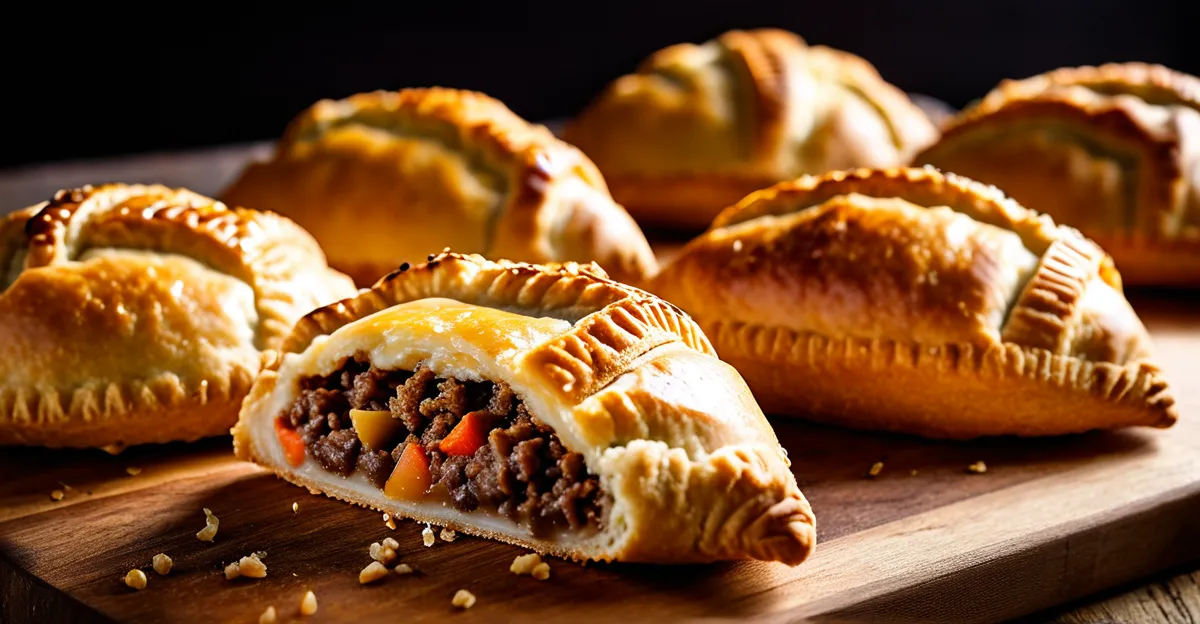Key elements of a traditional Cornish pasty
A truly authentic Cornish pasty is steeped in history and cultural significance, originally crafted as a hearty meal for Cornwall’s tin miners. The pasty’s design was practical, allowing miners to hold it by the crimped edge, which remained cleaner and was often discarded, reflecting its role in working-class heritage.
The traditional ingredients are simple but essential: diced beef skirt or chuck, potato, swede (rutabaga), and onion, all seasoned lightly with salt and pepper. These elements create a filling that is both flavorful and balanced, avoiding any overpowering tastes. The meat provides richness, while the vegetables add texture and moisture.
Topic to read : How do you prepare a traditional British Christmas pudding?
The Cornish pastry secrets lie in the pastry itself—a robust, shortcrust pastry made from wheat flour, lard, and butter, which is flaky yet sturdy enough to hold the juicy filling during baking. The pasty’s distinctive D-shape and the thick, hand-crimped edge are notable characteristics that distinguish a true Cornish pasty. This crimp not only seals the filling but serves as a signature mark of authenticity and craftsmanship passed down through generations.
Step-by-step guide to crafting a Cornish pasty
Crafting an authentic Cornish pasty begins with mastering the pastry techniques. The pastry dough, a delicate balance of wheat flour, lard, and butter, must be kneaded until smooth but not overworked, preserving flakiness. It should be rolled out evenly to about a quarter-inch thickness, ensuring it can hold the juicy filling without tearing during baking.
Also to read : How can you make the best homemade scones for a cream tea?
Next, the filling—the heart of the Cornish pasty method—follows a precise order. First, place diced beef skirt or chuck at the center, providing richness and flavor. Then add the traditional ingredients: cubed potato, swede (rutabaga), and chopped onion, ensuring even layering for balanced taste and texture.
Sealing and crimping are the final, defining touches. Fold the pastry in half over the filling, forming the classic D-shape. The hand-crimped edge is pinched firmly but carefully to ensure it is airtight, preserving the filling’s moisture and enabling the pasty to be held by its crust, true to its working-class origins.
Baking requires the right temperature and timing to develop a golden, flaky crust while cooking the filling thoroughly. Following this Cornish pasty method guarantees a delicious, traditional result every time.
Expert tips and insider secrets
Mastering Cornish pasty baking secrets involves precision and mindful techniques honed by generations of experts. One crucial Cornish baker tip is ensuring the pastry dough remains cold and handled minimally to retain its flakiness and strength. Overworking the dough warms it, causing it to lose structure, which undermines the pasty baking secrets.
Another key is in selecting and preparing fillings authentically. Always use fresh, diced beef skirt or chuck combined with evenly cubed potato, swede, and onion to preserve texture and ensure balanced moisture. This careful preparation helps avoid sogginess and preserves the pasty’s characteristic hearty flavor.
Professional advice emphasizes the importance of the crimp. The hand-crimped edge acts like a seal, locking in juices during baking. Practicing consistent, firm pinching ensures the Cornish pasty holds shape and doesn’t leak. Bakers recommend slightly thickening the edges to withstand heat and handling.
Finally, oven temperature and timing are pivotal in expert pasty baking. A hot oven initially sets the pastry before moderate heat finishes cooking the filling thoroughly. These insider methods elevate your making Cornish pasties skills, producing pasties with a perfectly golden crust and succulent inside every time.
Common mistakes and how to avoid them
Mistakes in Cornish pasty preparation often stem from mishandling pastry or filling, which can ruin the texture and flavor. One frequent Cornish pasty mistake is overworking the dough. Excessive kneading warms the pastry, causing it to lose its delicate flakiness and become tough after baking. To avoid this, handle the dough minimally and keep it chilled.
Another common error is improper filling moisture control. Too much liquid from vegetables can lead to soggy pastry, while too little results in a dry pasty. The solution is to cut ingredients into uniform cubes and avoid pre-cooking, as the filling will cook evenly in the pasty using the Cornish pasty method.
Shape preservation during baking is critical. A loosely sealed edge can cause leaking, leading to malformed pasties and loss of juices. Ensuring a firm, consistent crimp helps maintain structure and keeps the filling sealed inside, preserving flavor and moisture.
Finally, incorrect oven temperature or baking time can cause uneven cooking or burnt crust. Start with a higher temperature to set the pastry, then lower it to finish cooking the filling properly. Avoid these mistakes to consistently produce a truly authentic Cornish pasty.
Regional variations and local perspectives
Regional nuances in the authentic Cornish pasty showcase rich diversity while respecting its tradition. Although the classic filling remains consistent, some Cornish pasty variations highlight subtle shifts in ingredient proportions or preparation methods, influenced by local tastes. For example, in some areas, the crimping style differs; West Cornwall favors a thick, robust crimp, whereas East Cornwall bakers might present a finer, more delicate crimp, each reflecting regional identity.
Local perspectives also influence the choice of beef cuts or vegetable size, adapting to availability and customary preferences. Contemporary Cornish bakers often share insights revealing how maintaining the core elements—like the key traditional ingredients of beef, potato, swede, and onion—ensures the pasty’s essence remains intact, even amid minor alterations.
Some Cornish pasty variations incorporate modern twists but uphold the pasty’s working-class heritage by preserving the hand-crimped handle, a vital Cornish pastry secret. These adaptations demonstrate respect for craftsmanship while allowing innovation.
Understanding these regional differences enriches appreciation, encouraging enthusiasts to explore authentic recipes that honor Cornwall’s deep culinary heritage without losing sight of the pasty’s defining features.









